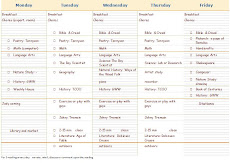This book from 1888 seems to confirm that, since the whole first section of the book is about teaching children to work with numbers in dot form so they can actually see what they are doing by "adding" and "taking away". It has a graphic system based on patterned dots roughly similar to dice or domino patterns. So ever since I read that book I've been looking for online dice or domino manipulatives.
I have some large foam dominoes that look a bit like this...except they are all standard black. So I've been showing these to the littlies frequently -- I keep them in the kitchen -- with the goal of getting them to recognize the shape of the number patterns immediately. They like to play with them, too. They also have been playing a fair amount with dice which of course have the same type of pattern.
 Anyway, today while I was looking online for manipulatives and worksheet activities, I found this WorksheetWorks site. It is pretty neat. You can enter parameters and it will print out various counting and number concept sheets. It has dice counting flash cards and also counting with objects, and simple image-based addition.
Anyway, today while I was looking online for manipulatives and worksheet activities, I found this WorksheetWorks site. It is pretty neat. You can enter parameters and it will print out various counting and number concept sheets. It has dice counting flash cards and also counting with objects, and simple image-based addition.There is a bit more about Ruth Beechick's approach to early education....here at this lovely blog. Basically, she says that in math learning, children move from:
- Manipulative/Concrete --->
- Image-based (still need visuals but don't need to actually handle and move the objects)---->
- Abstract (a mental image or symbol suffices -- you internally understand the notion of threeness, or variable, or square of the hypotenuse, or whatever)



No comments:
Post a Comment